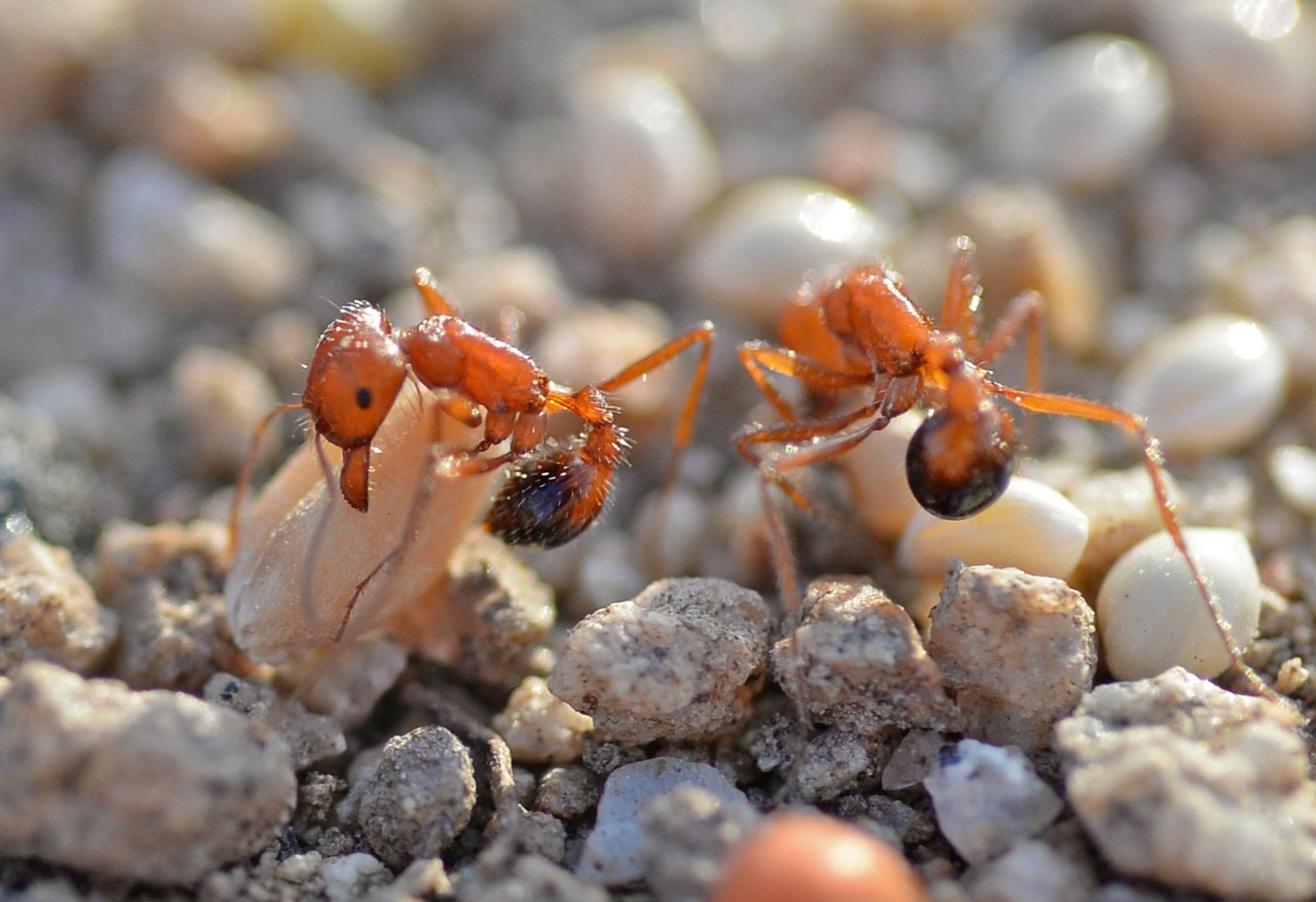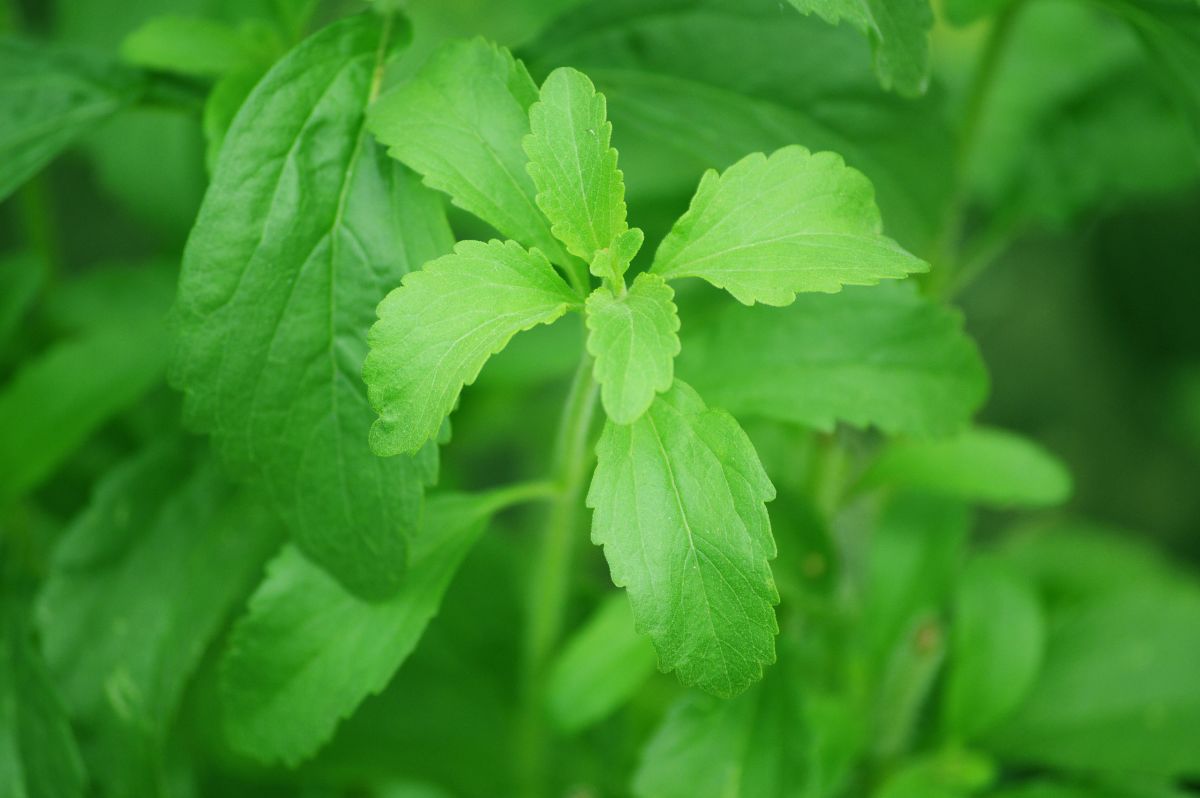Home>Garden Essentials>How Do Night Ants Get The Seeds From Desert Harvester Ants?


Garden Essentials
How Do Night Ants Get The Seeds From Desert Harvester Ants?
Modified: March 16, 2024
Discover how garden night ants cleverly obtain seeds from desert harvester ants. Explore the fascinating interaction between these two ant species in this insightful article.
(Many of the links in this article redirect to a specific reviewed product. Your purchase of these products through affiliate links helps to generate commission for Storables.com, at no extra cost. Learn more)
Introduction
When we think of ants, we often envision them scurrying around during the day. However, there is a fascinating group of ants that are active primarily at night. These nocturnal creatures, known as night ants, have evolved unique strategies to thrive in the darkness.
Night ants belong to various species, each with its own specialized adaptations for surviving in low-light conditions. Their behavior and foraging techniques differ significantly from those of their diurnal counterparts, making them a subject of great interest for researchers and nature enthusiasts alike.
In this article, we will explore the world of night ants and delve deeper into how they interact with another remarkable group of ants, the desert harvester ants, in their tireless quest for seeds in the desert.
Key Takeaways:
- Night ants have evolved clever tactics to steal seeds from desert harvester ants at night, using mimicry and stealth to avoid detection and secure additional food resources.
- Coexisting in the desert, night ants and desert harvester ants compete for seeds but also create microhabitats, showcasing the complex interactions within the ecosystem.
Read more: How To Harvest Seeds From Lettuce
Understanding Night Ants
Night ants, also known as nocturnal ants, are a diverse group of ants that have adapted to be active primarily during the night. They have unique physiological and behavioral characteristics that allow them to navigate and thrive in the darkness. These traits include specialized vision, heightened sensitivity to ultraviolet light, and an enhanced sense of smell.
One of the most fascinating aspects of night ants is their ability to forage efficiently in low-light conditions. While diurnal ants rely heavily on vision to find food sources, night ants have evolved alternative strategies. They use a combination of chemical cues and other sensory faculties to explore their surroundings, communicate with their colony members, and locate food sources.
Night ants are known for their exceptionally strong communal behavior. They often form large colonies that work together to carry out various tasks, such as finding food, caring for the brood, and defending their nest. This social structure is crucial for their survival, as it allows them to efficiently utilize available resources and protect themselves from predators.
Interestingly, some night ants have also developed mechanisms to regulate their body temperature and reduce water loss during the drier and cooler nighttime hours. This adaptation enables them to thrive in environments with extreme temperature fluctuations, such as deserts or forests with distinct day-night temperature variations.
Overall, understanding the unique characteristics and behaviors of night ants is essential in unraveling the mysteries of their nocturnal lifestyles. By studying these remarkable creatures, scientists can gain insights into how organisms adapt to different ecological niches and overcome the challenges of darkness.
Desert Harvester Ants and Seed Collection
Desert harvester ants, also known as seed-harvesting ants, are a remarkable group of ants that have developed an intricate system for collecting and storing seeds in arid environments. These ants play a crucial role in the dispersal and propagation of plant species in desert ecosystems.
The desert harvester ants have a specialized relationship with the seeds they collect. They primarily gather seeds from a variety of desert plants, including grasses, shrubs, and cacti. These seeds serve as their primary food source and also contribute to the mutualistic relationship between the ants and the plants.
Seed collection by desert harvester ants begins with scout ants venturing out from the nest in search of viable seed sources. Once a scout ant discovers a seed, it will return to the nest and communicate the location using chemical pheromones. This chemical trail helps guide other worker ants to the seed source.
Upon reaching the seed, worker ants start the arduous task of harvesting and transporting it back to the nest. Desert harvester ants have powerful mandibles that allow them to efficiently cut and carry the seeds. These ants can carry seeds that are up to several times their own body weight over long distances.
Back at the nest, the ants store the collected seeds in specially designated chambers. These chambers serve multiple purposes, including food storage, protection against predators, and regulation of humidity levels to prevent seed germination.
The stored seeds not only sustain the ants but also have ecological implications. When ants consume the nutritious outer coating of the seeds, they often leave behind the harder seed shells in discarded piles known as middens. These middens can accumulate over time and create microhabitats where other organisms, such as fungi and arthropods, thrive.
The intricate symbiotic relationship between desert harvester ants and the seeds they collect is a testament to the remarkable adaptations and ecological interactions that exist in arid environments. By dispersing seeds and creating microhabitats, these ants contribute to the biodiversity and resilience of desert ecosystems.
Night Ants’ Strategy for Obtaining Seeds
Night ants have developed a clever strategy to obtain seeds from the desert harvester ants. These nocturnal creatures have honed their foraging techniques to take advantage of the seed collection efforts of their diurnal counterparts.
The first step in the night ants’ strategy is to locate the nests of the desert harvester ants. Night ants have a keen sense of smell and are able to detect the pheromone trails left by the foraging harvester ants. By following these trails, the night ants are led directly to the nests.
Once they reach the harvester ant nest, the night ants employ a combination of stealth and speed to infiltrate and pilfer the collected seeds. They quickly navigate through the nest’s intricate tunnels, avoiding any potential confrontation with the resident harvester ants.
Night ants are equipped with specialized appendages that allow them to snatch and carry the stolen seeds effectively. Their efficient mandibles enable them to quickly remove seeds from the storage chambers without triggering any defensive responses from the harvester ants.
Unlike the harvester ants, night ants do not rely solely on seed collection as their primary food source. Instead, they supplement their diet with a variety of other food sources, such as nectar, small insects, and honeydew produced by other insects. The stolen seeds serve as an additional food resource for the night ants.
After successfully acquiring the seeds, the night ants make their way back to their own nest. This process involves retracing their steps and following the pheromone trails they have previously laid down, ensuring a direct and efficient return journey.
The night ants’ ability to exploit the seed collection efforts of the harvester ants provides them with an advantage in resource acquisition. By supplementing their diet with stolen seeds, the night ants can conserve energy and allocate their foraging efforts towards other food sources that may be more abundant during the night.
While the night ants’ strategy may seem like a clever theft operation, it’s important to note that it is a natural occurrence shaped by evolutionary processes. It is a prime example of the dynamics and interactions that exist within ecological communities, where different species have evolved unique strategies to survive and thrive.
Night ants are able to steal seeds from desert harvester ants by using their superior night vision and stealthy behavior. They wait until the harvester ants are asleep and then quickly snatch the seeds without being detected.
Tactics Used by Night Ants
Night ants have developed several tactics to maximize their success in seed acquisition and minimize the risk of detection and confrontation with the desert harvester ants. These tactics involve a combination of stealth, coordination, and communication among the night ant colony members.
One of the key tactics employed by night ants is their ability to remain undetected as they infiltrate the harvester ant nests. They do this by closely mimicking the chemical signature of the harvester ants, making it difficult for their prey to distinguish them from their own colony members.
Additionally, night ants have evolved to be smaller and more agile compared to the harvester ants. This allows them to navigate the narrow tunnels and chambers within the nest with ease, avoiding potential encounters and minimizing the risk of physical confrontation.
Another tactic utilized by the night ants is the use of pheromones to coordinate their actions and communicate with each other. They leave chemical trails behind as they venture into the harvester ant nests and while they carry the stolen seeds back to their own nest. These pheromone trails serve as a guide for other night ants to follow, ensuring a smooth and efficient operation.
Furthermore, night ants exhibit synchronous behavior, meaning that they coordinate their activities and foraging efforts based on external factors such as the availability of moonlight or specific temperature conditions. This synchronization allows them to optimize their foraging trips and minimize unnecessary risks.
It is also believed that the night ants employ a strategy known as “divide and conquer” when it comes to seed acquisition. Rather than targeting a single nest, they may spread their foraging efforts across multiple harvester ant nests in the vicinity. This strategy reduces competition and increases the chances of success in obtaining a sufficient quantity of seeds.
Overall, the tactics used by night ants demonstrate their impressive ability to adapt and thrive in the challenging desert environment. Through a combination of mimicry, agility, chemical communication, synchronized behavior, and strategic distribution of foraging efforts, these nocturnal creatures have evolved effective methods for seed acquisition and resource optimization.
Read more: How Do Ants Get Into Home Defense Ant Traps
Communication Between Night Ants and Desert Harvester Ants
Communication is vital for the smooth functioning and coordination of any social insect colony, and it plays a crucial role in the relationship between night ants and desert harvester ants. While these two groups of ants have developed distinct foraging strategies, they still engage in communication that affects their interactions.
Desert harvester ants, like many ant species, use chemical signals called pheromones to communicate with each other. They rely heavily on pheromones to mark trails, signal danger, and coordinate their activities within the colony. These pheromones help guide the foraging harvester ants to and from food sources, including the seeds they collect.
Night ants, being highly specialized in their nighttime foraging activities, have also evolved the ability to interpret and utilize the chemical signals emitted by the desert harvester ants. They can follow these trails to locate the nests and track down the seed storage chambers.
Interestingly, night ants have developed a level of chemical mimicry to deceive the desert harvester ants. By producing pheromones that closely resemble those of the harvester ants, the night ants can disguise themselves and infiltrate the harvester ant nests without raising suspicion. This mimicry allows the night ants to exploit the harvester ants’ seed collection efforts and steal the stored seeds without triggering defensive responses.
Although night ants and desert harvester ants have different activity patterns, there is evidence to suggest that the two groups may have some level of interaction. It has been observed that desert harvester ants may occasionally encounter night ants within their nests. These encounters could be a result of the night ants’ stealthy infiltration or accidental detection by the harvester ants.
The exact nature of the communication between night ants and desert harvester ants within the nest is still not fully understood. However, it is likely that the presence of night ants elicits some response from the harvester ants, potentially through chemical signals or behavioral cues. These responses may include aggression, defense, or avoidance strategies.
Overall, the communication between night ants and desert harvester ants is complex and multifaceted. While the night ants utilize chemical mimicry to exploit the harvester ants’ foraging efforts, the exact impact of their presence on the harvester ant colony dynamics remains an intriguing area for further exploration and research.
Coexistence and Competition Among Night Ants and Desert Harvester Ants
Night ants and desert harvester ants share the same desert ecosystem and engage in both coexistence and competition. While they have adapted different foraging strategies and behaviors, their interactions shape the dynamics of the ecosystem and influence the distribution of resources.
Coexistence between night ants and desert harvester ants is possible because they occupy different niches within the ecosystem. Desert harvester ants are primarily active during the day, focusing on seed collection and nest maintenance. Meanwhile, night ants fill the nocturnal niche, taking advantage of the seeds collected by the harvester ants and supplementing their diet with other food sources.
Competition arises when resources, such as seeds, become limited or when both groups exploit the same seed sources. Desert harvester ants invest considerable energy and efforts into seed collection, and the presence of night ants can potentially reduce the harvester ants’ access to these resources. This competition may lead to changes in foraging behaviors and resource allocation within the desert ecosystem.
It is important to note that the extent and impact of competition between night ants and desert harvester ants may vary depending on multiple factors, including seed availability, the size of ant colonies, and environmental conditions. In some cases, the night ants may successfully capitalize on the harvester ants’ seed collection efforts without significantly affecting the overall survival and reproductive success of the latter.
While competition exists, there may also be instances of mutual benefits and indirect interactions between the two ant groups. The seeds stolen by night ants from the desert harvester ants are often discarded in middens near their own nest. These middens create microhabitats where other organisms, such as fungi and arthropods, thrive. The presence of these organisms can potentially benefit the desert ecosystem by contributing to the nutrient cycling and decomposition processes.
Furthermore, the coexistence of night ants and desert harvester ants demonstrates the complexity and resilience of desert ecosystems. The variety of foraging strategies and resource utilization within the ant community enables the ecosystem to adapt to different environmental conditions and potential fluctuations in resource availability.
Ultimately, the coexistence and competition between night ants and desert harvester ants highlight the intricate interplay of ecological interactions within the desert ecosystem. Understanding these dynamics provides valuable insights into the mechanisms that govern community structure, resource allocation, and adaptation in diverse habitats.
Conclusion
Night ants and desert harvester ants are fascinating creatures that have adapted to thrive in the challenging desert environment. While they have distinct behaviors and foraging strategies, they coexist and compete within the same ecosystem. The coexistence between night ants and desert harvester ants is made possible by occupying different niches: night ants are nocturnal and opportunistic feeders, supplementing their diet with stolen seeds, while desert harvester ants are diurnal seed collectors.
Night ants have evolved incredible strategies to infiltrate the nests of desert harvester ants and steal their stored seeds. Their ability to mimic the chemical signals of the harvester ants and navigate the intricate tunnels undetected allows them to exploit the harvester ants’ efforts without triggering defensive responses. This strategic thieving ensures additional food resources for the night ants without causing significant harm to the harvester ant colonies.
Communication plays a critical role in the interactions between night ants and desert harvester ants. While the exact nature of communication within the nests is still not fully understood, it is believed that chemical signals and behavioral cues are involved. Night ants use pheromones to guide their foraging activities, and the harvester ants respond to the presence of the night ants, possibly with defensive or avoidance strategies.
Despite competition for limited resources, the coexistence of night ants and desert harvester ants demonstrates the resilience and complexity of desert ecosystems. The intricate balance between resource exploitation and conservation shapes the dynamics of the ant community and influences the distribution of seeds and other organisms within the ecosystem.
Studying the interactions between night ants and desert harvester ants provides valuable insights into the mechanisms of adaptation and survival in challenging environments. These remarkable creatures showcase the remarkable strategies and tactics that have evolved to optimize resource utilization and ensure the sustainability of their respective colonies.
In conclusion, the world of night ants and desert harvester ants is a fascinating realm of intricate foraging strategies, communication, and coexistence. The adaptations and behaviors of these ants highlight the diversity and complexity of natural ecosystems, reminding us of the remarkable intricacies that exist in the natural world.
Frequently Asked Questions about How Do Night Ants Get The Seeds From Desert Harvester Ants?
Was this page helpful?
At Storables.com, we guarantee accurate and reliable information. Our content, validated by Expert Board Contributors, is crafted following stringent Editorial Policies. We're committed to providing you with well-researched, expert-backed insights for all your informational needs.















0 thoughts on “How Do Night Ants Get The Seeds From Desert Harvester Ants?”